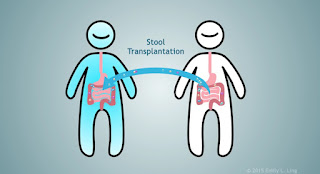Globalhealthsquare
Uncertain Health in
an Insecure World – 101
The Messy Middle
When my 100th blog post landed on December 22, 2016, I
literally did not know what more to say. And haven’t we all been on quite a
ride since then, round and round, and round again. In fact, the wheels are
whirling so fast and wobbling so erratically that like many, I just spun off.
It’s been 109,693,582 seconds since midnight on January 20,
2017. But who is counting?
Back in the square, we now find ourselves in The Messy Middle…
between a novel illness and uncertain health… awakening social justice and enduring
systemic racism… all while things are mutating faster that many governments and
their “leaders” can decide what to do about it.
In truth, nothing has really changed while we were apart.
You understand, of course, that as time inexorably passes,
things just change in ways that are impossible to predict. I mean, even the
magical algorithms are only as powerful as the data that they ingest… right? And
their mathematical biases are quite real, even when their masters aren’t vigilant
enough to see them. Sorry, but the intelligent machines cannot save us from
ourselves.
As I’ve written since we last spoke, “Not all facts are true, and not all data are valid.”
While we empiricists want to think that only new science and
big data point the way forward, it’s becoming clearer to me that only emotional
connection truly informs the human journey. And sad to say, mere facts are not
enough to sway some of us, or to influence our collective actions.
While I was away from the blogosphere, the transcendental
global crisis continued.
In January 2020, land and ocean temperatures were 0.04F
(0.02C) above the previous record breaking warmest winter months in 2016; both records
were 1.8F (1.0C) above the fifty year running averages. And while some low
grade oil price futures actually went negative on April 20, 2020 (North Dakota
‘sour’ priced at below U.S.$0.00 per barrel ), at $37 per barrel the 2020
average light-sweet crude oil prices are below the 2016 $43 per barrel average
price. Arctic Sea ice has declined 4.06% per decade since 1979, about 18,400
square miles or twice the size of Vermont per decade. In June of 2020, the
Laptev Sea ice north of Siberia shrunk by a record amount (see red line on graph)!
Who or what lifts us from that global morass?
Who is a sixteen
year-old Swede with Asperger’s autism, ADHD and selective mutism, Greta
Thunberg, who became a global climate crusader when she led a 2019 “school
strike for climate” campaign that captured the world’s flagging attention span.
Her relentless logic spoke to the 2030 climate decline that would create an
irreversible global chain reaction, an alarm compelling enough for the Swedish
government to nominate her for the Nobel Peace Prize… twice!
What is some surprisingly
good news from the COVID-19 pandemic. Government lock downs have measurably
reduced auto and airplane exhaust-driven atmospheric CO2 levels in
many parts of the world. Humans have learned that we can actually heal the Earth’s
fragile atmosphere in just weeks by doing fewer mindless drives, shops, trips
and commutes. Ironically, wet we cannot wait to restart our air polluting economies.
January 2020
March 2020
Wars, forced migrations and human rights violations are man-made
plagues with no vaccine.
While there may be a debate about the oriental origins of
COVID-19, these plagues continue, albeit for non-infectious reasons. Before we
could tell a pandemic from an epidemic (a Pandemic
is an epidemic with a Passport), the
“Us First” march of strongmen bullies
had begun to isolate us. With centrist leaders seemingly cowed, it took
women-led countries with 6-times lower national COVID-19 death rates to show
their clotted testosterone counterparts the way.
Great movements are made so by & through a fight-to-the-death
conviction for change.
The #blacklivesmatter hash tag created in 2013 by three
women became a movement in 2014, after the Ferguson Missouri police officer
shooting of an 18 year-old Black American, Michael Brown. BLM has gone global
because this shit just keeps happening! Protesters confronting the deep and
festering wound of systemic racism helped many of us to recover from our
collective ennui. Others cling to a past way of life, dog whistling their way
among monuments to preserve it.
Since our last conversation, there are fewer monuments, and
their defenders are very worried.
Truly bad actors have attained influencer status by circle-jerking
each other with actual or perceived threats. They’ve only “succeeded” as a
result of guileless global passivity and a lack of will for effective containment.
But just as U.S. exceptionalism had devolved into Twitter wars, and U.S.-China
relations into 5G hostage exchange diplomacy, COVID-19 rendered them oddly
vulnerable. Messrs. Trump, Bolsonaro, Modi and others have seen their power erode and their oppression partly undone. But as we saw in Post 100, Mr. Putin keeps smiling.
https://www.google.com/search?q=putin%20smiling%20gif
Yet there is reason for hope here in The Messy Middle.
We humanoids do
evolve, both individually and as a species, even in the most troubling and
potentially most dangerous of times. It’s not those clever Coursera courses,
Audible books or behavioral apps that we learn from. We decode The Human
Condition by learning from each other. It’s messy in that emotional middle. But
up close, with or without a mask… on or off a vent… present or absent antibodies,
is where it’s real… hurtful and heroic and frightening.
There, we learn from each other that with respect for each
other, we go on.
So we go on, here in The Messy Middle. I hope that if you can,
you will visit me there from time to time. We have much to share, and more to learn.
























































